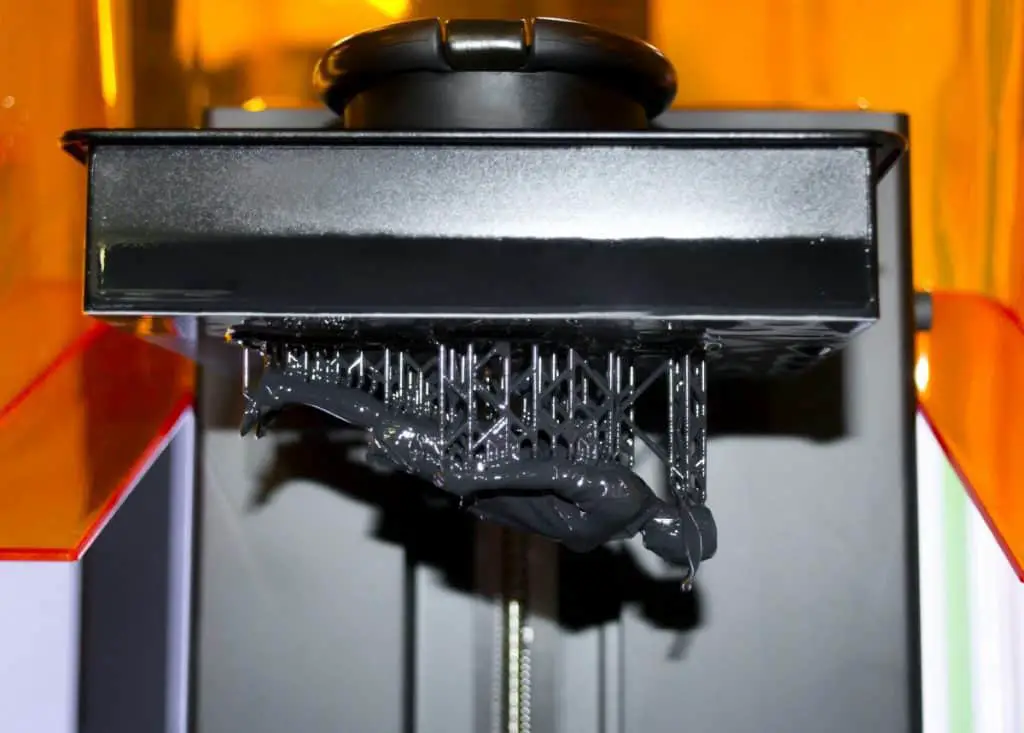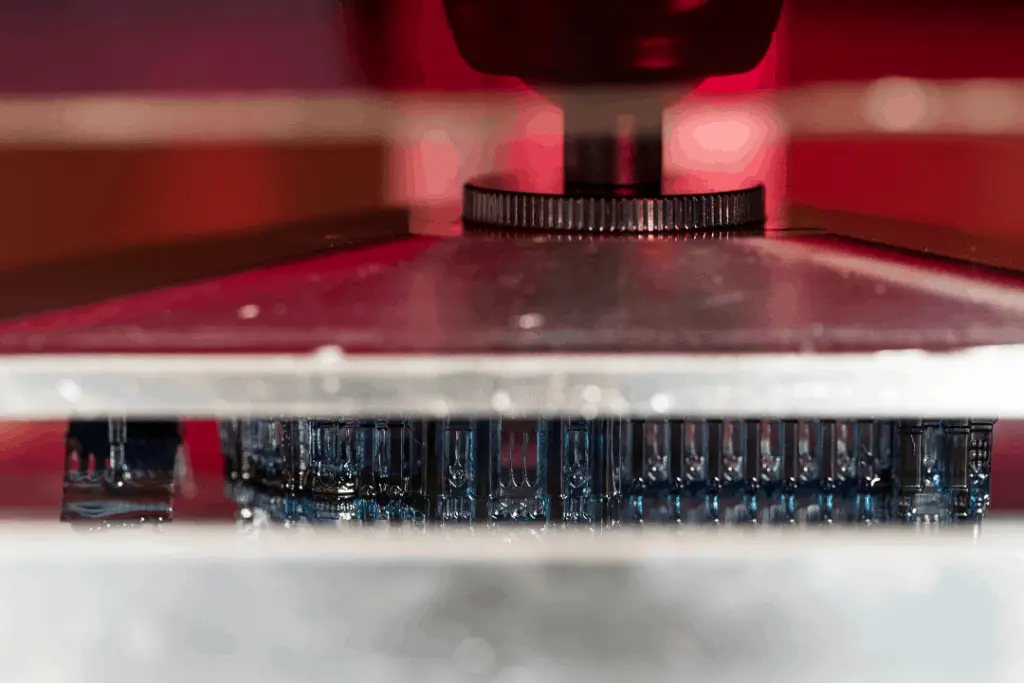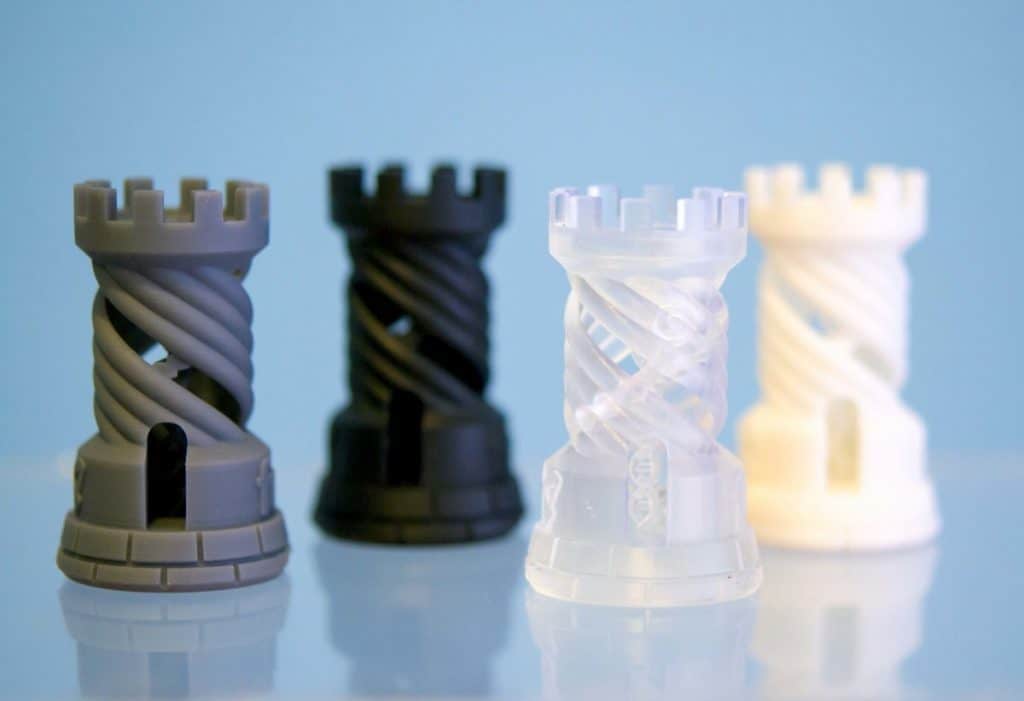Today we use resins in many types of products. Often, the resin is the main component of a product or simply necessary to give a quality finish. Resin is such a widely used component that it is logical to wonder how long it takes for UV light to cure resin?
Under a UV lamp, you can cure single component resin or UV resin in approximately five minutes to half an hour. For two-component resin, you must wait at least three days to have an efficient curing process.
Resin is a very versatile component that has many uses in everyday life. Resins are part of our lives from applications in the art world, jewelry, dental prosthetics, or 3D pieces. Therefore, we are going to review in this article everything related to resins and their curing process.

Understanding UV Resin
UV resin can cure or harden when under ultraviolet (UV) light or direct sunlight. This resin is a principal component for creating jewelry, crafts, dentures, and all types of 3D parts.
The resin is available in a clear liquid state, ready to be mixed with different pigments or materials. When dried, it produces a shiny and eye-catching appearance. It has many applications related to filling metal bases, small silicone molds, or coating for retractable plastic papers.
UV resin differs from epoxy resin. To cure, you don´t have to mix it with other components, such as a catalyst or accelerator. The resin can cure when in contact with UV light. We will need a UV lamp or flashlight; it could be the same lamp used for drying nail polish. For this reason, the great advantage that UV resin has over epoxy resin is its fast drying time. It is not necessary to mix it with any other additives.
Summarizing some of its main characteristics, we have the following:
- Curing in minutes, without a long waiting period.
- Cured with UV light and sunlight, without mixing with other components such as epoxy resin.
- Transparent color.
- Ready to use immediately.
- Contains non-toxic materials.
How Does The UV Resin Work?
You must place the UV resin in a plastic or silicone container to pigment the resin. In that case, we will need a remover to mix the resin until we get the expected color.
Once we apply the resin on the base, we must use a UV lamp or flashlight pointing directly and at a short distance to the resin until it dries completely. The drying time will depend on the thickness of the piece. It is essential to know that the mold must be transparent, allowing the light to penetrate to dry the resin completely. You can also encapsulate objects inside the resin and, in this way, work in layers.
Resin should be handled with care, taking some precautions into account.
- Always keep the container closed so that the resin does not harden.
- Ideally, you should work in places that are well ventilated.
- You should keep the resin away from the reach of children.
- You must work with gloves.
- It is necessary to use a transparent mold.

How Long Does It Take For The UV Light To Cure The Resin?
You must consider that the curing time of resin under UV light can change depending on several factors.
Some of the aspects that have the most impact on the curing time of the resin are:
- The size of the mold or object you want to fill with the resin.
- The type of resin.
- The curing method.
- The color of the resin.
Once we understand these factors and combine them consciously and conveniently, we will achieve a perfect curing time for each of our projects.
Usually, let’s take an average time. We can say that curing a resin under UV light can take from 5 minutes to 30 minutes, depending on the combination of factors mentioned above. The smaller the mold or object, the faster we will get the desired cure; we could even get perfect cures in as little as one minute.
What Methods Can I Use To Cure A Resin?
We already know that you can cure the resin by exposing it to UV light; however, other curing methods can make the process shorter or longer. Below we will review some of the main curing methods.

Professional Curing Device
The option of using a professional curing machine is the most efficient way to cure the resin. You place the object inside the device’s container, and the machine completely envelops the object with a homogeneous UV light at about 405 nm.
This uniformity of the light makes the curing of the model utterly regular over its entire surface simultaneously. This procedure reduces the risk of over-curing in specific points of the object.
The UV Light Lamp
The UV light lamp, generally used for nail polish curing, is the most common method of curing resin.
These lamps are pretty affordable when compared with a professional curing device. This technology is inexpensive but powerful at the same time and can quickly cure almost any resin model.
Its major drawback is that it is difficult to achieve a uniform cure over the object’s entire surface. What people usually do is manually rotate the model to cure each of its sides.
One way to counteract the shortcomings of this technique is to create a curing area with a cardboard box that has reflective material on each side. The reflective material to be used can be aluminum foil; this will cause the UV lamp to reflect around the object to improve the uniformity of the cure.
Sunlight
Suppose you do not have the resources to buy a professional curing device or UV lamp. In that case, there is always an affordable alternative, sunlight. The point is that the sun has natural UV light, which is the type of light we need to get the cure we need. However, keep in mind that although UV in sunlight is strong, it will never be as powerful as that provided by a UV lamp or professional device.
This explanation means that the sun will cure the resins, but it will take much longer. If curing the resin with the UV lamp takes a few minutes, it will take several hours with sunlight.

What Are The Advantages Of Curing Resin With UV Light?
As we saw in previous sections, the application of UV light is the method par excellence for curing resins. Now we need to understand the advantages of this method that make it the favorite of most people.
Curing Is Much Faster
Curing with UV light will only take a few minutes if the object or model is small in size. On the other hand, a small model made with two-component resin can cure up to three days. UV curing of larger models is also much faster and can take from minutes to hours.
Resin Temperature Flexibility
UV light allows us to cure resins that have different temperatures. In contrast to other methods, you do not have to heat or cool the resin to a specific temperature to achieve the desired cure.
Allows Us To Choose The Curing Area
The UV light will cure only the area of the object where we point it. This fact means that you can choose which areas to cure and which not to cure or prioritize the curing order. You cannot achieve this selectivity with other methods.
The UV Light Method Has No Ventilation Problems
In two-component resins, the dissolving additives emit vapors that can create a problem if the work area is not sufficiently ventilated. You necessarily need ventilation to eliminate these fumes. With UV light curing, you will not have any ventilation problems.
Related Articles
- Why Are My Resin 3D Prints So Brittle?
- SLA Printer Resins
- Choosing SLA Printer Resin
- Resin Printer Speed: What You Need to Know
- Why Is My UV Resin Sticky After Curing?
A Final Thought On The Curing Time Of UV Light-Cured Resins
Although there are several curing methods, UV light is the most common and preferred by most people. We must be clear that there is no perfect method; all have their advantages and disadvantages. However, UV light is the most popular due to its cure speed and wide range of applications.
Make sure you check out our YouTube channel, and if you would like any additional details or have any questions, please leave a comment below. If you liked this article and want to read others click here.
